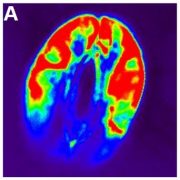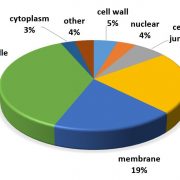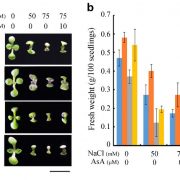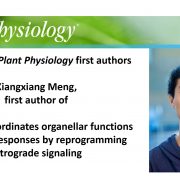
Recognizing Plant Physiology first authors: Zhubing Hu
Plant Physiology, Plant Physiology: Author ProfilesZhubing Hu, first author of Genome-Editing Based Engineering of CESA3 Dual Cellulose Inhibitor Resistant Plants
Current Position: Principal Investigator, Key Laboratory of Plant Stress Biology, State Key Laboratory of Cotton Biology, School of Life Sciences, Henan University, Kaifeng, China
Education:…

Dynamics of Xylem Water Release
Plant Physiology, Plant Physiology: On The InsideThe water transport system of woody plants can experience periods of excessive xylem tension. It is generally assumed that during these times, water stored in capacitive tissue moves into the transpiration stream and buffers the liquid tensions that develop inside the vessel lumen, thereby protecting…

Plasmodesmatal Structure and Function
Plant Physiology, Plant Physiology: On The InsideThree types of phloem loading have been defined in plants: 1.) “active apoplasmic” loading, in which sugar transporters are responsible for the active uptake of sugars into the sieve element companion cell complex (SECCC) which is believed to be symplasmically isolated; 2.) “passive symplasmic”…

The Unfolded Protein Response and Plant Development
Plant Physiology, Plant Physiology: On The InsideThe unfolded protein response (UPR) is a cellular stress response involving the endoplasmic reticulum (ER). The UPR is activated in response to an accumulation of unfolded or misfolded proteins in the lumen of the ER. However, ER stress can also be induced in the absence of external stressors,…

Identification of Leaf ER Bodies in Arabidopsis
Plant Physiology, Plant Physiology: On The InsideEndoplasmic reticulum bodies (ER bodies) are endoplasmic reticulum-derived organelles specific to the order Brassicales that are thought to play a role in plant defense against biotic factors. ER bodies are generally classified into two types: 1.) constitutive ER bodies that are found in the epidermal…

Phosphate Starvation Alters Root Calcium Signatures
Plant Physiology, Plant Physiology: On The InsidePlant roots foraging in the soil have to sense, transduce, and respond to fluctuations in water and nutrients plus a multitude of stresses to which they may be subjected. Biotic and abiotic stresses (including mechanical, salt, osmotic, and oxidative stress) trigger rapid and transient modulations in…

Ethylene and ABA Regulate Ascorbic Acid and Reactive Oxygen Species
Plant Physiology, Plant Physiology: On The InsideThe phytohormones ethylene and abscisic acid (ABA) often interact in controlling plant growth and development processes as well as plant responses to stress. The detailed mechanisms underlying the interaction of these two phytohormones, which may act synergistically or antagonistically with each other,…

Recognizing Plant Physiology first authors: Xiangxiang Meng
Plant Physiology, Plant Physiology: Author ProfilesXiangxiang Meng, first author of ANAC017 coordinates organellar functions and stress responses by reprogramming retrograde signaling
Current Position: PhD student, Department of Animal, Plant and Soil Science and Australian Research Centre in Plant Energy Biology, School of Life Science, La Trobe University,…

Recognizing Plant Physiology first authors: Hongyu Wu
Plant Physiology, Plant Physiology: Author ProfilesHongyu Wu, first author of An efficient system for Ds transposon tagging in Brachypodium distachyon L.
Current Position: Postdoctoral fellow, State Key Laboratory of Crop Biology, College of Horticulture Science and Engineering, Shandong Agricultural University, Tai’an, Shandong 271018, China
Education:…

